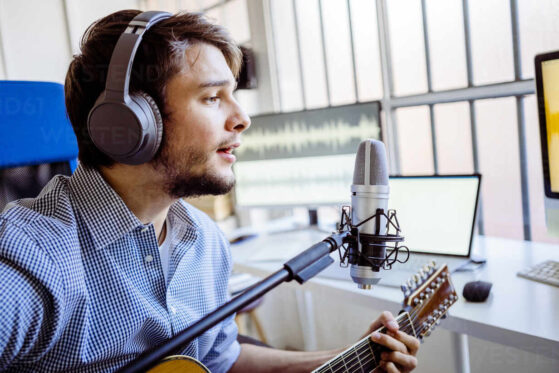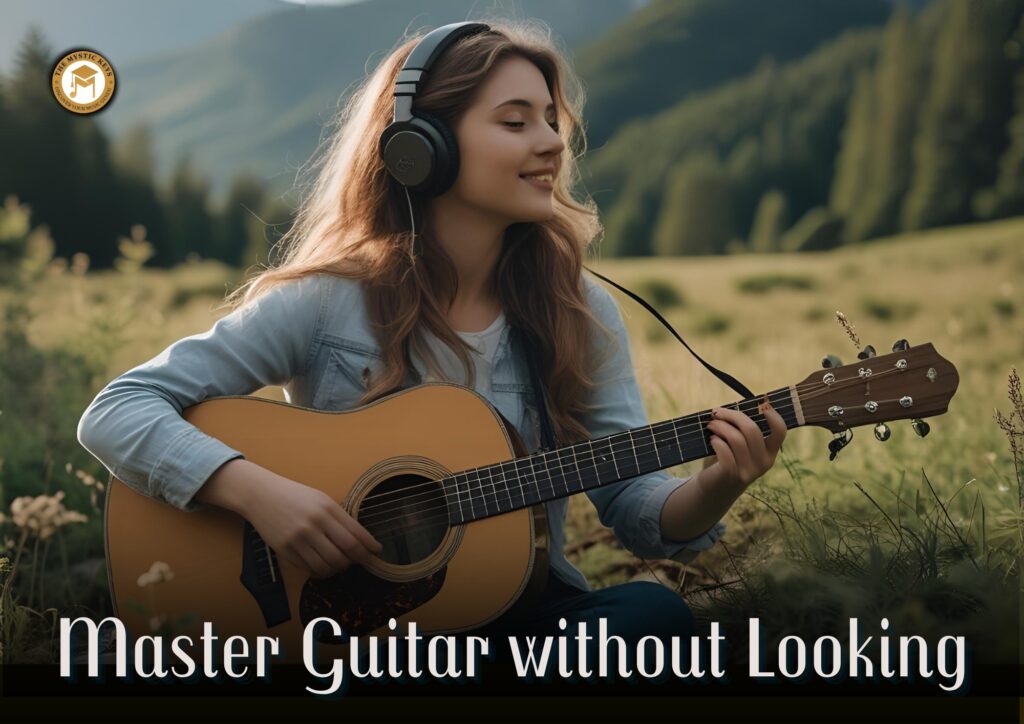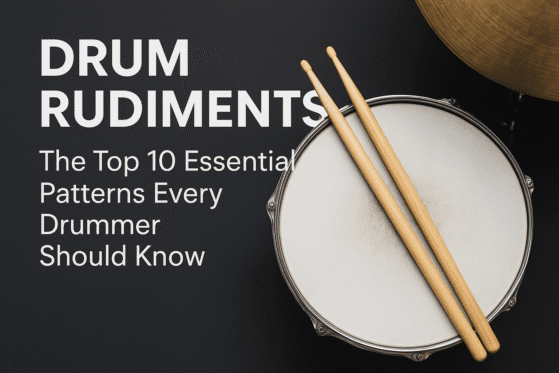Master Guitar Without Looking at Your Hands | A Complete Guide
One of the most common challenges guitar players face—especially beginners—is the overwhelming urge to constantly watch their hands while playing. It’s natural. After all, the fretboard is a visual maze of strings and frets, and without sight, it often feels impossible to find the right notes or chords. However, if you’ve ever seen a seasoned guitarist perform flawlessly without glancing at their fingers, you know this skill is not only possible but essential for musical freedom. That’s why learning to master guitar without looking is a game-changing milestone—one that empowers you to trust your hands, focus on your sound, and truly connect with your music.
So, how exactly do you train yourself to play guitar without looking at your hands? The answer lies in developing muscle memory, honing your sensory awareness, and training your mind and ear to work in perfect harmony. In this comprehensive guide, we’ll take you through the entire process step-by-step, ensuring that by the end, you’ll feel confident playing your guitar with your eyes closed — metaphorically and sometimes literally.

Why Playing Without Looking at Your Hands Matters
Before we dive into the how, it’s important to understand why this skill is so vital.
When you constantly look down at your hands, your attention is split. You become focused on the technical aspects, losing touch with the music itself. This can stunt your expressiveness, limit your stage presence, and make playing feel mechanical. Conversely, when you can trust your hands without looking, you free your mind to engage with the music emotionally and creatively. You can connect with your audience, communicate with bandmates, or even sing while playing—without the distraction of searching for notes.
Thus, playing without looking is about moving beyond technique to embrace musical artistry and confidence.

Know Your Guitar Like the Back of Your Hand
Before your fingers can move independently of your eyes, your brain must first have a strong mental map of the guitar neck.
Begin by learning the names of the open strings: from the thickest to the thinnest string, they are E, A, D, G, B, and E. Next, familiarize yourself with the fret markers—those dots usually found on the 3rd, 5th, 7th, 9th, and 12th frets. Think of these as the guitar’s natural signposts, guiding your hand placement without needing to peek.
Additionally, study the patterns of notes and scales on the fretboard. For instance, understand how the same note appears in different places and how octave shapes repeat. This theoretical knowledge is the foundation upon which your physical memory will build.
Pro Tip: Even when you’re away from your guitar, visualize the fretboard in your mind. Imagine placing your fingers on certain frets and strings. This mental rehearsal deepens your familiarity.

Develop Muscle Memory Through Slow, Deliberate Practice
Muscle memory is your body’s way of remembering how to perform tasks without conscious thought. To develop this, repetition is key—but repetition alone isn’t enough. How you practice matters immensely.
Start by practicing simple chord shapes and slowly transition between them without rushing. Focus on feeling where each finger lands rather than rushing to hit the chord quickly. For example, switch from a G major chord to a C major chord at a slow tempo, ensuring every finger is in place before moving on.
Similarly, practice scales—such as the major scale or pentatonic scale—at a slow pace, paying close attention to finger placement and hand movement. Incorporate exercises like string skipping to train your fingers to find strings by touch alone, rather than sight.
A useful technique is to occasionally close your eyes or practice in a dimly lit room. This forces your fingers to rely on sensation and position instead of your eyes. Even a few minutes of this focused practice daily can accelerate your progress.

Embrace Slow Practice for Deeper Learning
A common mistake many players make is rushing through exercises to play fast. While speed is an admirable goal, it should never come before accuracy. The slower you go, the more your brain can absorb and encode the movements into your muscle memory.
Use a metronome to keep a steady, slow tempo. Play each note or chord slowly and deliberately, making sure every finger lands precisely where it should. When you feel comfortable, increase the tempo slightly—but only when you maintain accuracy.
This mindful, slow practice helps build a solid foundation. It also prevents the development of bad habits that can be much harder to fix later.

Train Your Ears to Guide Your Hands
Playing without looking at your hands becomes significantly easier when you develop strong aural skills. In fact, your ability to master guitar without looking is directly tied to how well you can trust your ears. When you rely on your hearing, you can instantly detect when a note is off or when a chord isn’t ringing cleanly—even without seeing your fingers.
Start by playing scales and listening carefully to the sound of each note. Try to identify intervals by ear—how far apart notes are from each other. Next, practice humming or singing simple melodies, then playing them on your guitar without watching.
Over time, your brain will associate specific sounds with specific finger positions. This auditory feedback loop reinforces your muscle memory and helps you self-correct on the fly.

Use Physical Landmarks and Finger Anchors
Your guitar has physical features that act as helpful reference points. Instead of looking, use your sense of touch to find your way.
For example, notice the feel of the pickup area, the width of the neck, or the position of the strings relative to the fretboard edges. Many guitarists rest their pinky or thumb lightly on the guitar body or back of the neck as an anchor point to stabilize their hand.
These tactile cues let you “feel” where you are on the guitar, making it easier to find chords and notes without sight.

Practice Mindful Playing to Heighten Sensory Awareness
Playing guitar without looking demands a deep connection between your mind and body. To master guitar without looking, practice mindfulness during your sessions by paying close attention to the sensation of your fingers on the strings, the pressure you apply, and the shape of your hand.
Notice the subtle differences in finger placement that produce clean versus muted sounds. Feel how your fingers slide or stretch between notes. This sensory feedback trains your hands to self-correct without needing visual cues.
By becoming more aware of these tactile sensations, you’ll build a more intuitive relationship with your instrument—one that allows you to play freely, confidently, and without relying on sight.

Combine Playing with Singing or Speaking
An effective way to break the habit of looking at your hands is to multitask during practice. Try playing a simple chord progression while singing along or even talking through your practice routine.
This forces your brain to divide attention, encouraging your hands to operate more automatically. It also simulates real-world performance, where you need to focus on lyrics, timing, or audience interaction—while your hands continue playing seamlessly.
If your fingers fumble at first, slow down and repeat until the coordination becomes second nature.

Incorporate Targeted Technique Drills
Focused drills accelerate your progress in playing without sight. Some recommended exercises include:
Blind chord drills: Form chords without looking, then pause to verify your fingers’ positions.
Spider exercises: Move each finger independently up and down the fretboard to develop finger independence.
Scale visualization: Practice playing a scale pattern, then close your eyes and “visualize” playing the same pattern without touching the guitar.
Regularly mixing in these drills keeps your practice fresh and sharpens specific skills necessary for hands-free playing.

Simulate Real-World Playing Situations
To truly test your ability, practice under conditions that mimic live performance:
Stand up and play with a guitar strap.
Jam with other musicians where you must maintain eye contact.
Record yourself playing without looking to evaluate your progress.
These scenarios help you build confidence and reduce reliance on sight during actual performances.

Patience and Consistency Are Key
Learning to play guitar without looking is a gradual journey. Progress may be slow at times, but persistence is crucial. Practice regularly—even if only for 10 to 15 minutes daily—and celebrate small victories along the way. Each moment you commit to this process brings you one step closer to master guitar without looking, transforming uncertainty into confidence.
Tracking your practice and progress can keep you motivated, reminding you how far you’ve come.

In Conclusion | Freedom Comes with Trust
The ability to master guitar without looking at your hands is not just a technical skill—it’s a gateway to true musical freedom. It frees you to express emotion, connect with listeners, and play with confidence in any setting.
By understanding your guitar, practicing deliberately, training your ears, and developing mindful awareness, you’ll soon find that your fingers “know” the fretboard without your eyes. This independence transforms your playing from mechanical to magical.

Ready to Master Guitar with Expert Guidance?
If you want personalized help mastering this skill and many others, consider enrolling in our Electric Guitar Lessons Online at The Mystic Keys. Our expert instructors guide you step-by-step, building your confidence, technique, and musicality from day one.
Start your journey towards effortless, hands-free guitar playing today!
Related Blogs
How to Train Your Ear for Better
Guitar Playing
Want to improve your guitar playing? Learn how to train your ear to recognize chords, melodies, and harmonies, boosting your musical skills and confidence
How to Transition Smoothly Between Chords on Guitar
Struggling with chord transitions? Learn practical techniques to switch between chords smoothly, improve finger placement, and enhance your guitar playing skills.
Breaking Down Music Theory for Guitarists | The Easy Way
Struggling with music theory for guitar? Learn how to understand chords, scales, and keys easily with this beginner-friendly guide.








